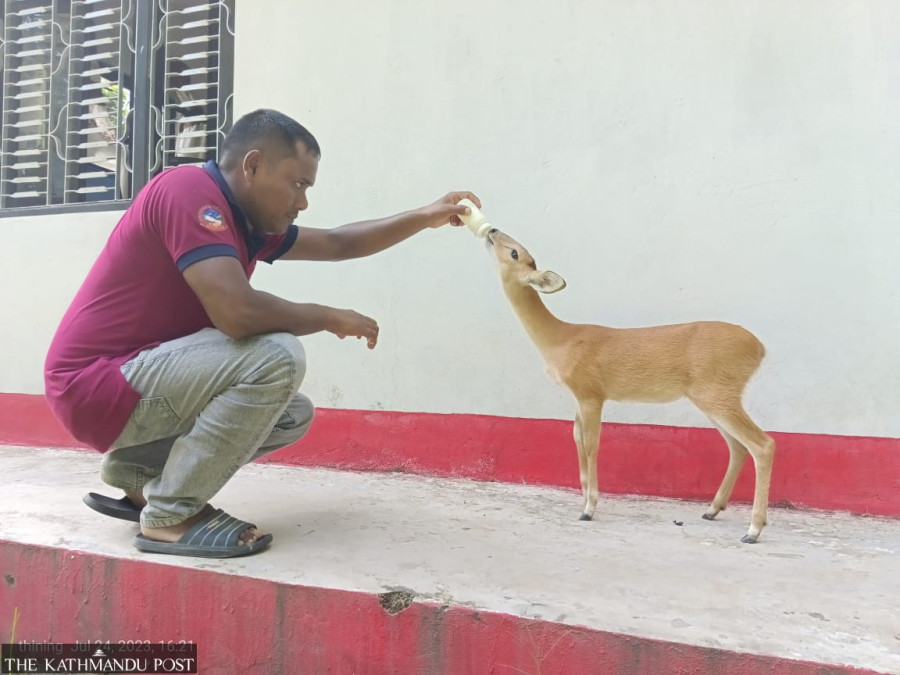Lumbini Province
Four-horned antelope’s calf growing under human care
Discussions are on whether the calf should be released in the forest or kept at the central zoo in Lalitpur.
Rupa Gahatraj
A four-horned antelope’s calf has mesmerised its caretakers in Shamshergunj Sub-division Forest Office in Banke, where it was brought around five months ago.
Local residents had found the calf at a settlement near Asok Community Forest in Rapti Sonari Rural Municipality-2. They surmised that the calf was separated from its mother since it still had its umbilical cord wrapped around its body when found.
The four-horned antelope is locally known as Chauka or Chausingha and is found in Nepal and India.
The four-horned antelope (Tetracerus quadricornis) is categorised as a vulnerable species in the IUCN red list. Nepal’s National Parks and Wildlife Conservation Act 1973 categorises it as a protected animal. The animal is found in Nepal and India. Banke National Park, Bardiya National Park, Chitwan National Park, Parsa National Park and surrounding areas are its habitat. The lifespan of the animal species is 8 to 10 years. The male has four horns in its head thus it is called Chausingha or Chauka in Nepali.

The caretakers at the Shamshergunj Sub-division Forest Office said that the calf has become familiar with humans and is not keen on entering the forest. According to the Sub-division Forest Office, the rescued calf is male.
“The calf has made the forest office its home,” said Potani Tharu, a gardener at the forest office. “He likes playing with people and seeks attention. Everyone here loves the calf like a pet. Even the locals come to play with him because he’s so friendly and adorable.”
Tharu went on, “He drinks cow’s milk and eats soft leaves. He sits on my lap and plays with me. I have been raising him as my own child and have come to love him. My husband and I look after him. It is quite lovely to have him here.”
Sushil Subedi, chief of the forest office, said although the forest is the calf’s natural habitat, he shows no inclination to enter the forest. “The calf is not ready to go to the forest just yet. We also don’t want to leave him in the forest unattended,” said Subedi. “We have to ensure his safety first. Even here, we have to keep him safe from stray dogs and other animals.”
According to Subedi, discussions are on whether the calf should be released in the forest or kept in the central zoo in Lalitpur. “We are worried about releasing the calf in the forest fearing that it could be attacked by other big animals or again enter the settlement in search of people. We will make a decision later,” he said.
Conservationists stress the need to conserve the four-horned antelope as it is an endangered species in the country due to heavy habitat loss. “The conservation of the animal species is essential. Forests are a safe place for the conservation of wild animals like four-horned antelope. The calf should be freed in the forest after it is fully grown up,” said Shyam Kumar Sah, the chief conservation officer at the Banke National Park.
But for now, he is well looked after and pampered at the forest office, said Tharu, the gardener. “We have grown very fond of him and would care for him until he is ready to go back to the forest,” she said.




 19.12°C Kathmandu
19.12°C Kathmandu















